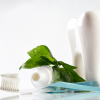- General
- Telehealth
- Dentist
- Career Trends
- Featured
- Legal
- Dentist Industry
- News and Events
- Technology
- How To
- Procedures
- Training
- Employer News
- Candidate News
Recent Posts
Most Popular
Newly Developed Material Could Regenerate Tooth Enamel

Tooth enamel is the hardest tissue in the human body.
It forms the outer part of the tooth and is regularly exposed to acidic food and drink, extreme temperatures, and biting forces.
Unlike other tissues in the body, however, enamel cannot regrow once it’s lost, leading to tooth decay and loss for around 50 percent of the world’s population. For years, the dental industry has struggled to address the growing problem of loss of enamel.
In response to this challenge, Scientists at the Queen Mary University of London have developed a way to grow mineralized material that could potentially regenerate hard tissue like bone or dental enamel.
A study by Dr. Sherif Elsharkawy identified a specific protein material that triggers and guides the growth of apatite nanocrystals at multiple scales. The growth is similar to the growth of dental enamel in the human body, and its structure is critical to the extreme performance of dental enamel.
This allows researchers to direct a synthetic material to mineralize in a strongly controlled manner, creating synthetic structures which imitate a variety of hard tissues.
In the short term, the new material could be used to prevent and treat tooth decay or tooth sensitivity. The development could encourage minimally invasive dentistry and allow dentists to offer alternatives to traditional tooth restoration. Rather than doing away with existing treatments, the study’s authors hope the development will simply increase the options available to dental patients.
Researchers are most excited about the fact that the finding could allow dentists to focus on prevention in the form of stopping decay before it progresses.
Teeth are protected by a substance called dentin which protects the nerves. The dentin has pores which connect the external part of the tooth to the nerves. Loss of tooth enamel exposes the tooth’s dentin, creating pain in the presence of extreme temperatures.
The National Health and Nutrition Examination Survey calls tooth decay the most prevalent chronic disease for both adults and children.
- 42 percent of children between the ages of 2 and 11 have tooth decay in their baby teeth.
- 23 percent of children aged 2 to 11 have untreated dental problems.
- 59 percent of adolescents aged 12 to 19 have tooth decay.
- 92 percent of adults aged 20 to 64 have tooth decay in their permanent teeth.
- 93 percent of seniors aged 65 and above have tooth decay in their permanent teeth.
Clinical trials will continue for two to three more years, with a goal to develop home care therapies as well as professional treatments.
The study has a larger claim in that it allowed scientists to develop a practical invention by precisely mimicking the way molecules behave.
In the future, researchers anticipate that the process could be applied to other hard tissue repairs like bone and that the technology will pave the way for other uses in the field of regenerative medicine.








Comments